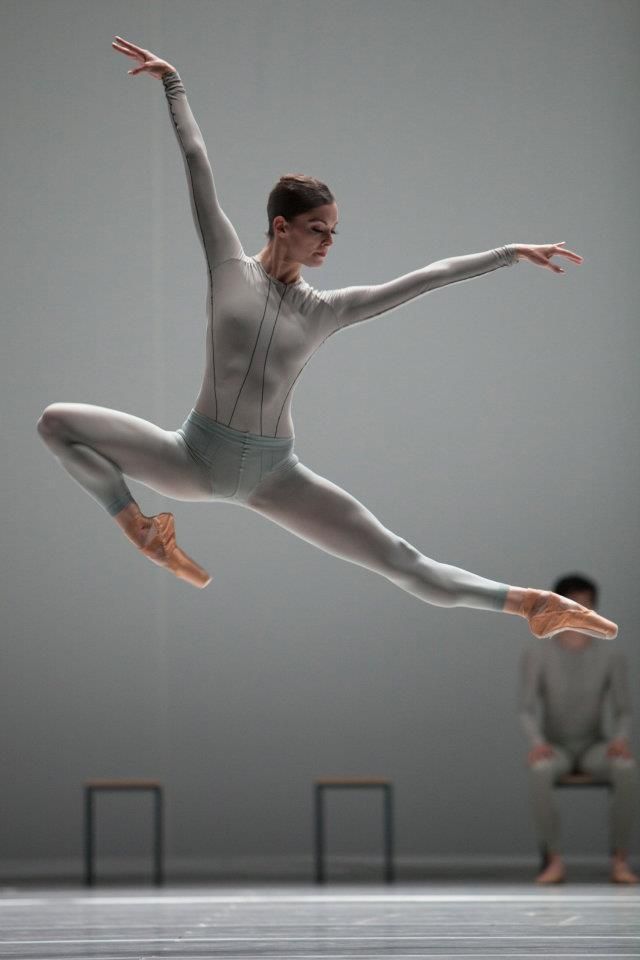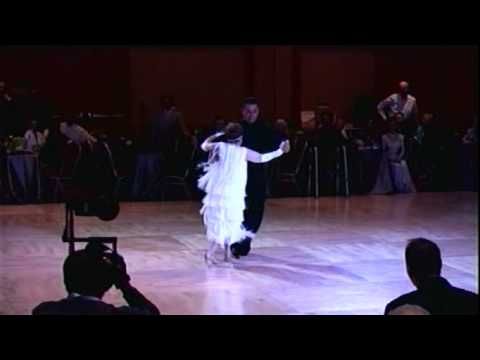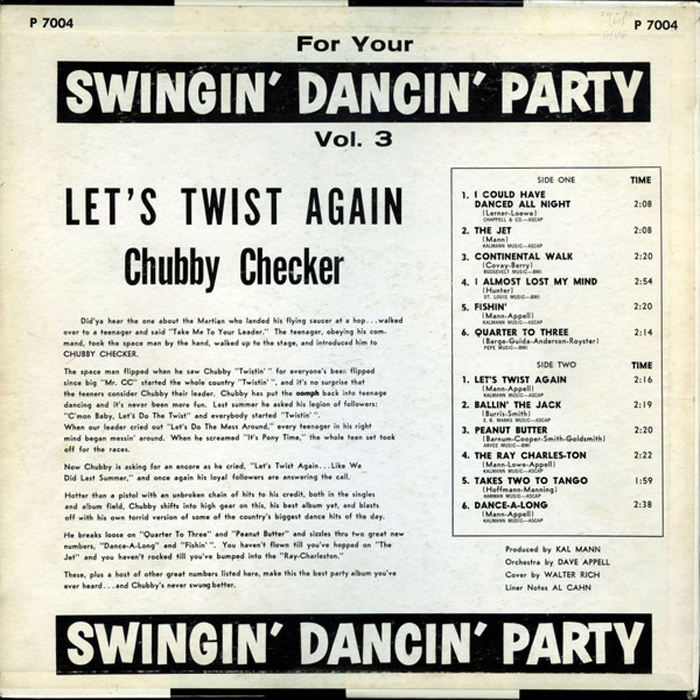How do you line dance
Line dancing lessons online - How to line dance steps
Line dancing is one of the most fun county dances out there because you can do it anywhere, and you do not need a partner! Line dance steps can vary greatly as there are a million of combinations that you can learn. Here is a video that will help you learn how to line dance online. This is a great combo you can do at events, parties and other functions. Below we included a few line dance video lessons to help you learn.
Line dancing Lessons – Mini video series
Move #1: The cupid shuffle move:
Text summary of the move:
The cupid shuffle is one the easiest line dance steps that you can learn. It starts with 8 counts of side steps to the right, with the last step being a touch (no weight change). Then repeat the same 8 counts to the left. Then you do 8 counts of “heel steps” in place. Lastly, you do 8 counts of stepping in place to turn 1/4 to the left. Now repeat the same steps all over facing the new wall.
Move #2: “The wobble” line dance move:
Text summary of the move:
This move starts with a jump forward and wigling/grooving then you jump back and again wigling/grooving in place. Then you wobble your hands to the left and then wobble your hands – you can put your own style into it! Then you will do a simple cha cha step where you fowrwad, back and cha cha cha in place, Again – forward, back and cha cha cha in place. From there you are just going to do rhythmical steps in place to turn and face another wall. Then you start all over again.
Move #3: The cowboy boogie
Text summary of the move:
This line dancing step starts with a “grapevine” step to the right (side, behind and side) with a “hitch” (knee up) at the end.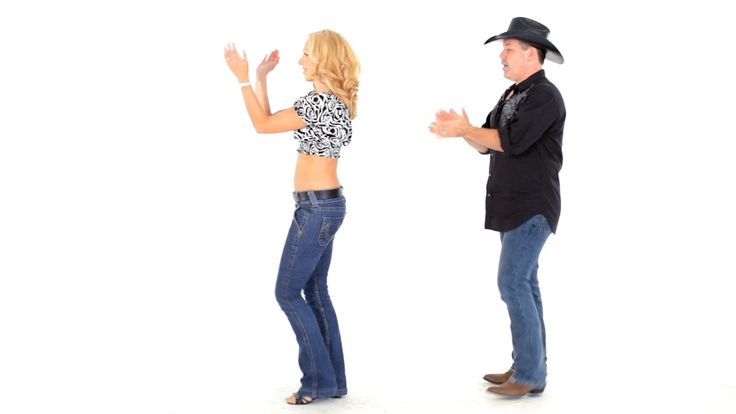 Then repeat the same “grapevine” step to the left and do the hitch again. Then 1 step forward and hitch, 1 step foward and hitch. Now you step back for 3 counts and hitch at the end. Then you going to “boogie” with the hips, which just means you going to do a small hip movement forward and back, then you turn 1/4 turn to face the new wall and hitch. Then do the same steps facing the new wall.
Then repeat the same “grapevine” step to the left and do the hitch again. Then 1 step forward and hitch, 1 step foward and hitch. Now you step back for 3 counts and hitch at the end. Then you going to “boogie” with the hips, which just means you going to do a small hip movement forward and back, then you turn 1/4 turn to face the new wall and hitch. Then do the same steps facing the new wall.
To help your line dancing, you may also want to learn how to country dance. Furthermore, Ballroom dance lessons will also help you to develop balance and coordination.
Tips for getting better better in Line dancing:
1. Learn the counts. Line dancing is not hard when you can count the entire choreography as you do it. Each single step, hip movement, or wobble has to be timed to the music.
2. Distinguish between a “step” and a “touch”. A step is when you change your weight on the foot and a touch is when you do not change weight on the foot. Touches are very commonly used to switch directions so make sure you know when its a touch versus a step.
3. The magic is in between the steps. While the steps and the counts are set, the way you dance in between is what counts. Put your own style into the steps. You can do many different things with your hips, upper torso and arms to stand out.
Want to learn more dancing?
Visit Learntodance.com for other dance lessons.
Other Dance styles:
Tap Dance Steps
How to Salsa dance
Ballet dance terms
Ballroom dance lessons
How to dance at a club
Belly dancing lessons
How to dance hip hop
How to Line Dance | Beginner’s Guide for 2023
Learning how to line dance is a fun endeavor for you and a friend or group of friends. According to Stanford University, “the health benefits of dancing include stress reduction, increased cognitive acuity and the ability to ward off the onset of Alzheimer’s disease and dementia.” Along with lifting moods, easing anxiety and improving balance and flexibility, it’s just plain fun! You don’t even need a partner.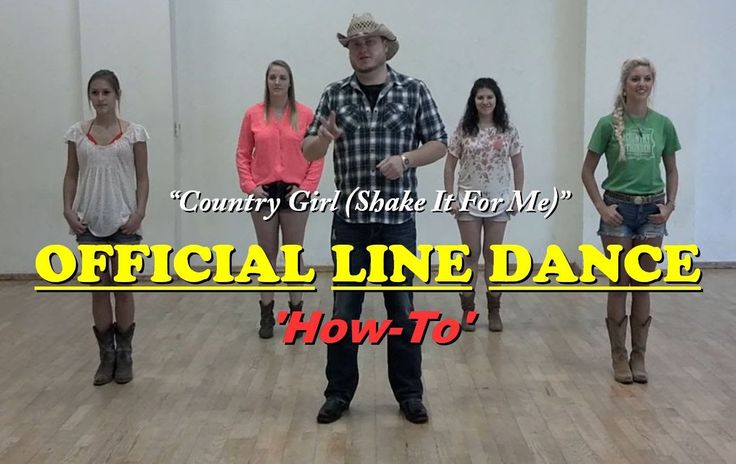
Movies like Sweet Home Alabama, Cool Runnings, Thelma and Louise and even Shrek Forever After feature the fun of learning how to line dance. Who wouldn’t want to get in on this social and energetic dance movement?
So what is line dancing and how do beginners get started? From stepping left to turning right, to staying in your own row, learning how to line dance can appear to be an intimidating concept to master. We’ve compiled an introduction to learning how to line dance that includes its basic steps and what it's all about to help you get on the right foot (pun intended)!
Jump to Section
- Line Dancing Lessons
- What is Line Dancing?
- Five Basic Line Dance Steps
- Popular Line Dances
- Line Dance Songs
Line Dancing Lessons
Dance Classes
Line dancing for beginners is easy when you book classes with professional dancers. With dance classes in NYC, dance classes Las Vegas or dance classes in Colorado Springs, you can join a group of like-minded beginners for a fun and energetic evening as you learn how to line dance.
With dance classes in NYC, dance classes Las Vegas or dance classes in Colorado Springs, you can join a group of like-minded beginners for a fun and energetic evening as you learn how to line dance.
Not ready to show off your skills? You can also sign up for online dance classes to attend from the comfort of your own living room. Check out dance classes near you to find the perfect class to learn how to line dance at your own comfort level.
Social Settings
Another way to learn how to line dance is to jump right in there — figuratively and literally! Bars, dance clubs and group gathering places across the country are one of the best ways to learn how to line dance. Line dancing is even done at weddings. While Texas and Tennessee offer a plethora of dance halls, you’ll find places all over the U.S. to learn how to line dance. Here are a few:
- Wildhorse Saloon in Nashville, Tennessee
- The Grizzly Rose in Denver, Colorado
- Billy Bob’s in Fort Worth, Texas
- Ponderosa Lounge and Grill in Portland, Oregon
- Robert’s Western World in Nashville, Tennessee
- Cowboy Country Saloon in Long Beach, California
- The Bowery in Myrtle Beach, South Carolina
- Pop’s Tavern in Baltimore, Maryland
- Gilley’s Saloon in Las Vegas, Nevada (Sound familiar? The original Gilley’s was in Pasadena, Texas and the film site for Urban Cowboy.
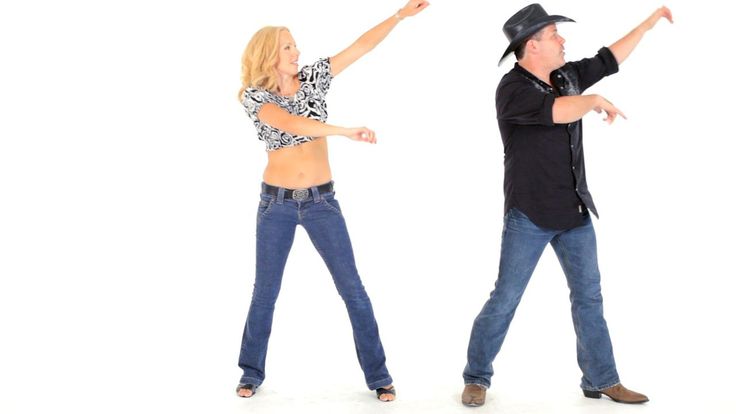 )
) - Coyote Joe’s in Charlotte, North Carolina
via Canva
What is Line Dancing?
Line dancing involves synchronized movements done in unison to choreographed steps. Dancers line up in rows facing in the same direction (though it can also be done facing each other). Each movement (whether it’s a step, hip movement or a wobble) is timed to the music.
Line Dancing History
Line dancing may seem like a fairly new dance, but it goes back to the 1920s with the Shim Sham. In fact, African, Native American and European cultures have histories of dance styles like line dancing. New generations add movements, steps, songs and style to add on to the genre, making learning how to line dance an ever-evolving sport.
Country Line Dancing
The style became more mainstream and widely popular in 1992 with Billy Ray Cyrus’ “Achy Breaky Heart.” Everybody and their brother wanted to learn how to line dance to country music! The song filled up country line dance saloons and bars with cowboy hat, boot and denim-wearing dancers of all ages.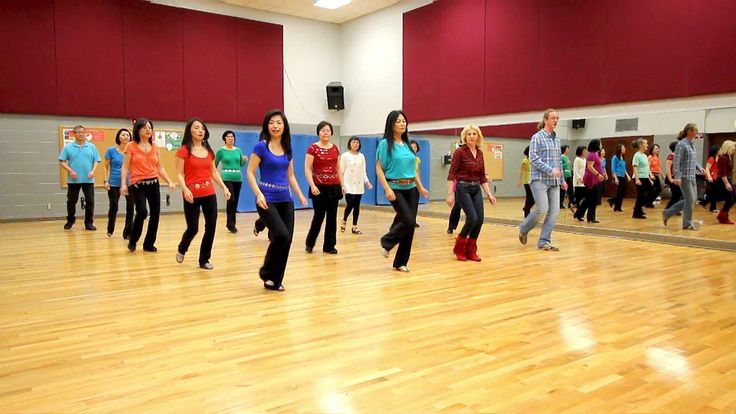
This is probably the scene most visualize when they think of line dancing. And, while it has evolved from traditional country line dances like square, round and folk, the wonderful thing about the genre is that anybody can learn how to line dance.
Line dancing has millions of combinations of steps, combined with walls, so this is one dance where you can grow skills and movements the more you practice learning how to line dance.
Steps and Touches
As you get started learning how to line dance, the most important aspect is figuring out steps. A step is when you change your weight. A touch is when you don’t change the weight (this is mainly used to change directions).
Put basically, there’s a step for each beat in 4/4 time (four steps over four music beats). To time your steps, count from one to eight or do a count of 1, 2, 3, 4 – 1, 2, 3, 4.
Walls
When learning how to line dance, keep in mind that formations have either one, two or four walls. A wall refers to the direction that the dancers are facing (think of it like they’re forming a wall/barrier). With one and two wall versions, dancers are always facing the front and back walls.
A wall refers to the direction that the dancers are facing (think of it like they’re forming a wall/barrier). With one and two wall versions, dancers are always facing the front and back walls.
One-wall means everyone faces the same direction when performing steps. Two-wall is when, at the end of each dance sequence, everyone turns 180 degrees. Then, they begin again facing the back.
Four-wall is the most difficult, especially when you’re just beginning to learn how to line dance. At the end of the steps, everyone turns 90 degrees and proceeds facing one of the side walls.
Throughout the dance, dancers finish and start again by facing a new wall. When you’re first learning how to line dance, it’s best to stick to the basics and add on as you get accustomed.
via CanvaFive Basic Line Dance Steps
While it’s seen as a group effort, you can learn how to line dance alone, which makes it terrific for line dancing for beginners to practice right at home.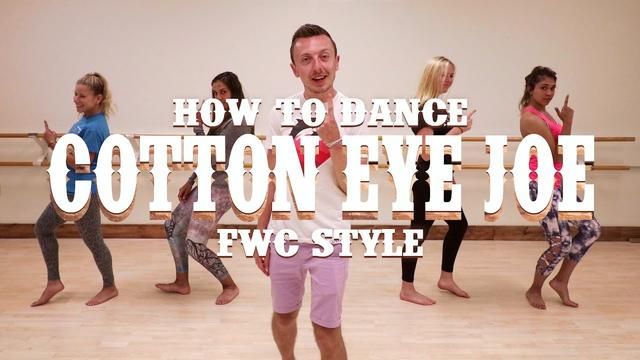 You just have to learn some basic counting, combined with the steps and you’re ready to go. Accurate timing and the proper foot placement are the key things to remember when you learn how to line dance.
You just have to learn some basic counting, combined with the steps and you’re ready to go. Accurate timing and the proper foot placement are the key things to remember when you learn how to line dance.
So, what are the five basic steps in line dancing and how do you do them? By becoming familiar with the five basic line dance step names listed below, you'll have a great headstart for your first official line dancing lesson.
1. Grapevine
The grapevine is a continuous traveling step that goes to the side with crossing behind and/or in front. It involves a three count move to either side. On the fourth count, you have the option of a brush, kick or scoot.
2. Weave
A weave is the same as a grapevine but with four counts.
3. Scoot
A scoot, as the name implies, is a slide of the weighted foot in a forward, backward or sideways motion. The opposite leg is raised with a bent knee.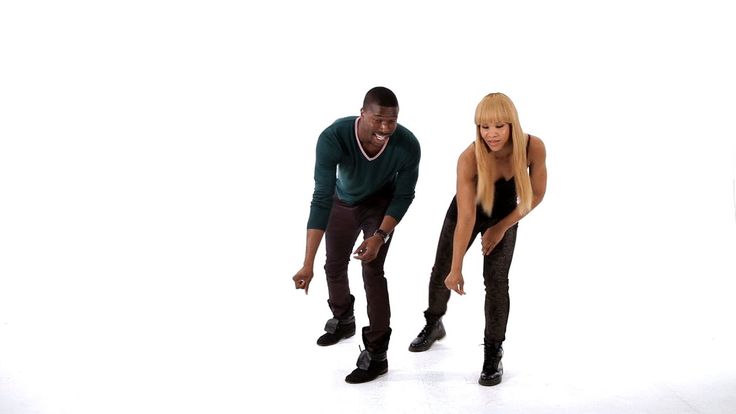 A scoot can also be done with weight on both feet.
A scoot can also be done with weight on both feet.
4. Brush
A brush is when the free leg swings forward or back as the sole of the foot brushes the floor.
5. Kick
A kick is a leg lift movement in any direction. Don’t completely straighten the knee.
via CanvaPopular Line Dances
When it comes to learning how to line dance as a beginner, it is best to start with some of the easiest line dances. You may be familiar with popular dances, such as the Cupid Shuffle or the Electric Slide, which often play at weddings or other dance events. You can learn how to line dance these hit numbers in no time!
The Cupid Shuffle
The Cupid Shuffle is one of the easiest line dances for beginners learning how to line dance for the first time. The song tells you just what to do! “To the right, to the right, to the right…to the left, to the left, to the left...“
- Take eight side steps to the right (last step is a touch step)
- Next take eight counts to the left
- Then eight heel steps in place
- Last, do eight counts of stepping in place and turn ¼ to the left
- You’ll now be facing a different wall and you’ll then repeat the same steps
Cowboy Boogie
- Take a grapevine step (step to the side, step behind, step to the side) to the right
- Do a hitch (knee up) move at the end
- Repeat this same step and hitch to the left
- Next, a step forward with a hitch
- Another step forward and hitch
- Step back for three counts with a hitch at the end
- Then “boogie” with hips (this means to do a small hip movement forward and back)
- Then turn ¼ to face new wall
- Repeat steps facing the new wall
Line Dance Songs
There are a variety of different choreographed songs within the line dancing genre. Not all songs are performed to the same steps, which may make it more difficult, but certainly gives it a unique advantage and lots of fun steps to learn.
Not all songs are performed to the same steps, which may make it more difficult, but certainly gives it a unique advantage and lots of fun steps to learn.
Steps are usually choreographed to a specific song, which then becomes the name of that routine. Some popular ones include: The Stroll, the Cowboy Boogie, the Electric Slide, the Achy Breaky Heart, the Macarena, the Cha-Cha Slide, the Cupid Shuffle and the Wobble.
When learning how to line dance for beginners, try “Two-Step” (by Laura Bell Bundy featuring Colt Ford). This is not to be confused with the two-step partner dance.
The Electric Slide and Cowboy Hustle (done to Vince Gill’s “What the Cowgirls Do”) are beginner line dances to try. “Watermelon Crawl” (Tracy Byrd), “My Maria” (Brooks & Dunn), “Cha Cha Caliente” (Jennifer Lopez) and "Rockin’ the Wagon Wheel" (Darius Rucker) are more on the beginner-moving-into-immediate side.
Popular Line Dance Songs
- “Boot Scootin’ Boogie” (Brooks & Dunn)
- “Achy Breaky Heart” (Billy Ray Cyrus)
- “Watermelon Crawl” (Tracy Byrd)
- “Any Man of Mine” (Shania Twain)
- “Man! I Feel Like a Woman!” (Shania Twain)
- “Macarena” (Los Del Rio)
- “The Loco-Motion” (Little Eva)
- “Gangnam Style” (PSI)
- “Old Town Road” (Lil Nas X featuring Billy Ray Cyrus)
- “Cupid Shuffle” (Cupid)
- Electric Slide (done to the song “Electric Boogie” by Bunny Wailer)
- “Hoedown Throwdown” (Miley Cyrus)
When it comes to learning how to line dance, the best piece of advice is to just have a good time.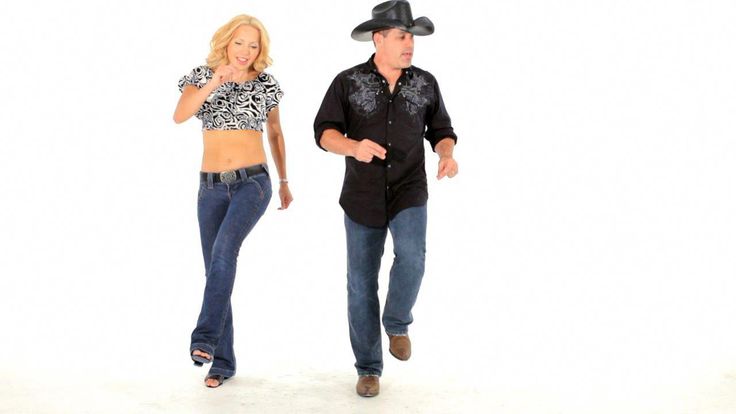 You don’t even have to be a country music fan with all the pop, salsa and jazz-inspired line dances out there! Once you’ve gotten the steps down, you can put your own spin on what you do in between. Add some funky hip, torso or hand movements to shake it up!
You don’t even have to be a country music fan with all the pop, salsa and jazz-inspired line dances out there! Once you’ve gotten the steps down, you can put your own spin on what you do in between. Add some funky hip, torso or hand movements to shake it up!
Whether you’re learning how to line dance by taking line dancing lessons or joining a dance at a club, party, wedding reception or other event, you’ll be among like-minded dance enthusiasts as you learn how to line dance. You’ll be line dancing like a pro in no time!
For even more creative ideas and inspiration, check out other experiences happening on Classpop!
Related Articles
A Beginner's Guide to Bachata DancingA Beginner's Guide to Cumbia Dancing
How to Belly Dance (With Confidence!)
How to Slow Dance With Style
How to Salsa Dance Beginner’s Guide
How to Swing Dance: A Beginner’s Guide
Lyrics of Techie - Nightcore
Show me what you gonna do
I can feel your body
Show me what you really want me to be your daddy
Stay with me in the light
I'm in love when you dance, dance
Refren (x2):
Woman you are so sexy, move it!
Move your body, move your body, let's do it!
Shake body lines
Don't stop, don't stop, just move your body!
Come get up, get on the line cuz imma
Big baller me give yuh di light i wanna
cuz keep you looking divine mi going
check yuh while i'm bubbling pon di corner
i've been so lonely all this time
I need your love 'cause you're so beautiful
Deh pon mi mind yuh have to internalize the shine
My baby please show me a sign
Show me what you gon' do
I can feel your body
Show me what you really want me to be your daddy
Stay with me in the light
I'm in love when you dance, dance
Come get up, get on the line cause imma
Big baller me give yuh di light I wanna
Cause keep you looking divine mi going
Check yuh while I'm bubbling pon di corner
I've been so lonely all this time
I need your love Cause you're so fine
Deh pon mi mind yuh gotta shine
My baby please show me the sign
Refren (x2):
Woman you are so sexy, move it!
Move your body, move your body, let's do it!
Shake body lines
Don't stop, don't stop, just move your body!
Show me what you're gonna do
I can feel your body
Show me what you really want me to be your dad
Stay with me in the light
I'm in love when you dance, dance
Feel your body
Be your dad
Into the light
I'm in love when you dance, dance
Refren (x2):
Woman you're so sexy, move it!
Move your body, move your body, let's do it!
Shake body lines
Don't stop, don't stop, just move your body!
Don't stop, don't stop, just move your body! Show me what are you going to do
I feel your body
Show me what you really want me to be your dad
Stay with me to light
I'm in love when you dance, dancing
Refren (x2):
Woman you are so sexy, move it!
Move the body, move the body, let's do it!
Shake body lines
Do not stop, do not stop, just move the body!
Come get up, go on line, because imma
Big baller me give yuch di light i want
Because to keep you yuch looking for divine miles going
Check out yuch while I bubbles pon di corner time
I need your love because you are so beautiful
DEH PON MILL RELATE YOUKHY HAS MACHINE
My child please show me a sign
Show me what are you going to do
I feel your body be your dad
Stay with me to light
I'm in love when you dance, dancing
Come get up, go on line, because imma
Big baller me give yuch di light i want
Because to keep you yuch looking for divine miles going
Check out yuch while I bubbles pon di corner
I was so lonely all this time
I need your love because you are so beautiful
DEH PON MILL RELATE YOUKHY HAS MACHINE !
Move the body, move the body, let's do it!
Shake body lines
Do not stop, do not stop, just move the body!
Show me what are you going to do
I feel your body
Show me what you really want me to be your dad
Stay with me to light
I'm in love when you dance, dancing
Feel your body
Be your dad
On light
I'm in love when you dance, dancing
Refren (x2):
Woman you are so sexy, move it !
Move the body, move the body, let's do it!
Shake body lines
Do not stop, do not stop, just move the body!
Do not stop, do not stop, just move the body!
Download
- Txt
I see you dancing.
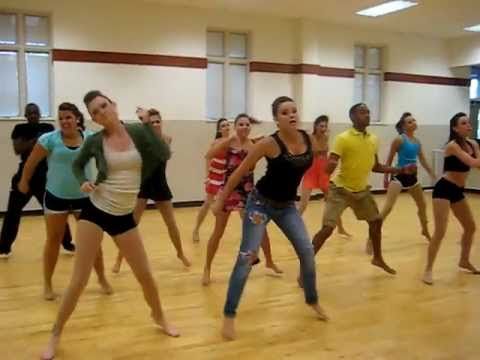 Why you can already praise Roberto Mancini - My Italy - Blogs
Why you can already praise Roberto Mancini - My Italy - Blogs A lot of boring discussions about the tactics of the Italian team.
Italy defeated Finland and Liechtenstein. Isn't she obliged to win against such rivals?
We are talking about modern Italy, which a year and a half ago did not qualify for the World Cup. In addition, even at the best of times, the Azzurri did not know how to smash modest teams. I remember the matches with the Finns under Giovanni Trapattoni as part of the qualification for Euro 2004. Lineup: Buffon, Nesta, Cannavaro, Zambrotta, Totti, Vieri, Del Piero. Everyone is young and full of energy - the average age of the team barely exceeded 27 years. Some players are the best in the world in their positions. And on the scoreboard the same result - 2:0. Then only Michael Forssell stood out in the Finns, but now Markku Kanerva's team has several interesting performers at once - recent victories in the League of Nations over the Greeks and Hungarians confirm their decent level.
Liechtenstein is really weak. However, the Italians have not scored six goals against anyone since 1993. And since then I had to play with Malta, San Marino, Haiti, the Faroe Islands and other dwarfs. The Nationale has not won 6-0 since John F. Kennedy was President of the United States in 1962. And most importantly - Mancini deserved compliments not so much for the results, but for the work done. What is this work?
ST had five fees in nine months. Last summer, he took inventory - the Italians defeated the Saudis, lost to the French and drew with the Dutch. The quality of football was so-so. And there was no team, as such - just a group of football players, exhausted by criticism, failures and a long season. This is largely why Mancini gave them another chance - in September, when the League of Nations started. I was at the stadium in Bologna and watched the guys. Against their background, the Poles looked like a team from another planet, almost Brazil under Socrates.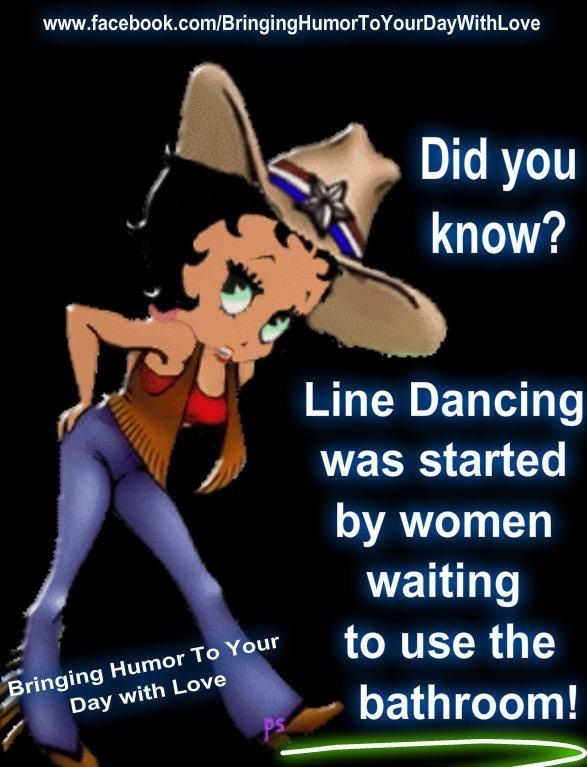 After the match, Italian journalists said: “What do you want? We don't have Zieliński-level midfielders!" And then there was a defeat from the Portuguese, after which Mancini began reforms.
After the match, Italian journalists said: “What do you want? We don't have Zieliński-level midfielders!" And then there was a defeat from the Portuguese, after which Mancini began reforms.
What reforms?
The turning point is the friendly match against Ukraine. The Italians drew, but for the first time in a long time, there was no shame in the quality of football. Verratti, Jorginho and Barella came out in midfield. For the Cagliari player, this was the debut for the National. Ahead - Bernardeschi, Insigne, Chiesa. The idea of playing without a nominal center forward at all is not Mancini's invention. Before him, in the Italian national team, a similar structure was used by Cesare Prandelli. But CT was mainly inspired by Maurizio Sarri's Napoli. Big team of small people. Italy didn't have a great center forward. There was Mario Balotelli, who walked across the field in Bologna. There was also Andrea Belotti, who doesn't always seem to hit the doorway. And there was Ciro Immobile, who on the eve of calls to the national team for some reason changes places with his twin brother. Two years ago, Napoli had a similar situation after the departure of Higuain, and then Sarri, out of desperation, turned 169centimeter Belgian in the center forward.
And there was Ciro Immobile, who on the eve of calls to the national team for some reason changes places with his twin brother. Two years ago, Napoli had a similar situation after the departure of Higuain, and then Sarri, out of desperation, turned 169centimeter Belgian in the center forward.
Mancini has a strong team of analysts, some of whom have been with the national team for a long time. However, not all ST listened to them. For example, there is Antonio Gagliardi, a specialist in the analysis of opponents, as well as a big fan of the methods of Maurizio Sarri. He spent hours watching old Napoli matches. As a result, the Italian headquarters borrowed some points from the Parthenopeans. In particular, the circulation of the attacking group, as well as the interaction patterns of Verratti with Insigne in front and Verratti with Jorginho in midfield. The famous triangles were taken just one to one. Studying the advance of the Italians during the maneuvering phase, it is easy to imagine how Verratti was tormented the previous day by demonstrations of Allan's movements. But it was worth it - Marco has never played so well in the national team.
But it was worth it - Marco has never played so well in the national team.
During the meeting against Ukraine, not everything worked 100%, but after three days, the CT inverted the positions of Barella and Verratti, and the scheme started working. This time, none of the Italian journalists even stuttered that the Poles were Martians. On the contrary, everyone appreciated the spectacle of the azzurri style, although they grumbled about the lack of a killer instinct. But it is better to create chances and not realize them than to create nothing at all. Mancini then showed courage by trusting his analysts.
What was his next step?
Then there was Sensi. You can rely on the trio of Verratti - Jorginho - Barella, but it is already clear today who is the weak link in it. The Chelsea midfielder has many useful characteristics: he understands geometry, he has an average pass and physics. However, Jorginho is not even close to being a genius.
It's like comparing Cassano and Insigne. The first one could do everything. Watch his best matches - there are no limits to skill at all. It seems that just a little bit more and Mazzola's hand will appear from the clouds, and Toto will touch his fingers, as in Michelangelo's fresco in the Sistine Chapel. Insigne, with all his talent, only imitates the movements of his great predecessors. Jorginho also has some resources, but he is a midfielder for the present. Or for the near future. Mancini's gaze is directed far ahead. ST was an artist himself, he knows how to recognize artisans.
The first one could do everything. Watch his best matches - there are no limits to skill at all. It seems that just a little bit more and Mazzola's hand will appear from the clouds, and Toto will touch his fingers, as in Michelangelo's fresco in the Sistine Chapel. Insigne, with all his talent, only imitates the movements of his great predecessors. Jorginho also has some resources, but he is a midfielder for the present. Or for the near future. Mancini's gaze is directed far ahead. ST was an artist himself, he knows how to recognize artisans.
Surprisingly, the debut of Stefano Sensi went unnoticed by many. And in vain. The idea of using a medzala, which at times is not a medzala at all, is borrowed from Roberto De Zerbi. In his "Sassuolo" there is a constant transfer of the conductor's baton. True, sometimes it is dropped, but this does not bother the Brescia coach. His possession begins with not possession. And Sensi is an important element of this philosophy. Why not do the same with the national team?
What was new in the last two matches?
The idea of proactive football based on ball control remains from the last mini-cycle. For three and a half months, the team has not forgotten anything - this is already a huge achievement for Mancini. They say that he talks about tactics with each player individually, and then intensive analyzes are held for everyone together. ST is not comfortable with two workouts a day like Fabbri, Sacchi and Conte did. After all, it did not give anything but the hatred of big clubs. Mancini understands that he has little time to give serious loads.
For three and a half months, the team has not forgotten anything - this is already a huge achievement for Mancini. They say that he talks about tactics with each player individually, and then intensive analyzes are held for everyone together. ST is not comfortable with two workouts a day like Fabbri, Sacchi and Conte did. After all, it did not give anything but the hatred of big clubs. Mancini understands that he has little time to give serious loads.
Club blocks are yet another utopia that experts rely on for some reason. Enzo Beardzot had nine Juve players and eight from Torino. They came to the base with dozens of typical combinations in their heads that Radice and Trapattoni had taught them. Today, this is hard to imagine. Of course, club ligaments must be used, but one cannot hope for their durability. A year before the 2014 World Cup, we thought that Balotelli and El Shaarawy would play 50 matches together, but in reality it turned out quite differently.
On the eve of the start of Euro 2020 qualifiers, Insigne and Chiesa were injured. Many people in Mancini's place would probably look for an excuse in this, but he managed to use their absence for good. Against the Finns, the tactics of Juventus were partially copied in the second leg of the 1/8 finals of the Champions League. I dwelled on this in a little more detail in the text after the game.
Many people in Mancini's place would probably look for an excuse in this, but he managed to use their absence for good. Against the Finns, the tactics of Juventus were partially copied in the second leg of the 1/8 finals of the Champions League. I dwelled on this in a little more detail in the text after the game.
Of course, bringing in Keane was a strong move. And here again I do not understand the Italian public. They say that the guy hardly plays in the club. That he is too young. That it is being promoted by an agent. So what? Can't call him? Moise is in great shape, in recent matches Allegri has used him regularly. Mancini chose the right moment - the national team needs those who are at the peak of their abilities, on the rise. No old merit should be taken into account.
What did Mancini do? He turned the 4-3-3 formation into an asymmetric 3-2-2-3, with Bonucci in an unfamiliar right-center position. Bernardeschi and Barella moved to trekwarti, with Fede making room on his flank for Piccini. On the left, they gave space to Kin, who was supported by Biragi. In midfield, Verratti and Jorginho formed the doppio play structure. Together, they made more than two hundred passes, and 70 of them were at each other. Their goal was to pull the opponent's middle line towards themselves in order to make it easier for Barella and Bernardeschi to capture the space between the lines.
On the left, they gave space to Kin, who was supported by Biragi. In midfield, Verratti and Jorginho formed the doppio play structure. Together, they made more than two hundred passes, and 70 of them were at each other. Their goal was to pull the opponent's middle line towards themselves in order to make it easier for Barella and Bernardeschi to capture the space between the lines.
It was a nice plan, but it didn't work to the end. The Finnish coach deserved compliments - he kept seven people behind him, and all the lines were compact. The figures are impressive - the maximum distance between them was a little more than 28 meters. And this is at a baricentro level of 51 meters! In Italy, it was only 60 centimeters higher. Arrigo Sacchi would have given a standing ovation. The Finns didn't sit deep, they acted like Giampaolo's "Empoli" in his best days.
But not everything is explained by the merits of the opponent. Bernardeschi was nervous. In the club next to him are Mandzukic and Cristiano, and here he must lead partners.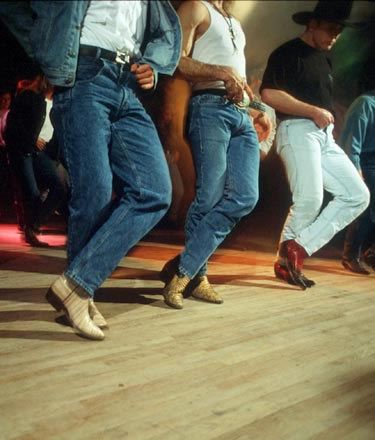 And, of course, Immobile was again almost useless. Not only did he move incorrectly, he also got offside four times. Quick goal Barella was largely accidental, but he liberated the hosts. However, Mancini adequately assessed what was happening and after the break made important changes. First, the inversion of the positions of Keane and Bernardeschi. Secondly, the adjustment of the location of Bonucci, who returned to the center due to the return of Piccini. And, finally, the exit of Quagliarella, who was prevented from excelling only by bad luck and the class of the opponent's goalkeeper. But none of this compares to moving Verratti a few meters forward. During the break, I exchanged views with the coach of the Milan football academy and the editor-in-chief of Italy's best publication on tactics, which was present at the Stadio Friuli. He insisted that the hosts lack a midfielder who occupies this area. And Mancini fulfilled his wishes exactly.
And, of course, Immobile was again almost useless. Not only did he move incorrectly, he also got offside four times. Quick goal Barella was largely accidental, but he liberated the hosts. However, Mancini adequately assessed what was happening and after the break made important changes. First, the inversion of the positions of Keane and Bernardeschi. Secondly, the adjustment of the location of Bonucci, who returned to the center due to the return of Piccini. And, finally, the exit of Quagliarella, who was prevented from excelling only by bad luck and the class of the opponent's goalkeeper. But none of this compares to moving Verratti a few meters forward. During the break, I exchanged views with the coach of the Milan football academy and the editor-in-chief of Italy's best publication on tactics, which was present at the Stadio Friuli. He insisted that the hosts lack a midfielder who occupies this area. And Mancini fulfilled his wishes exactly.
The score of the first half suited the hosts.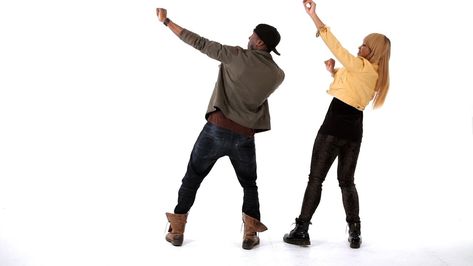 How many Italian coaches, looking at the scoreboard, would prefer to leave things as they are or play more reliably by bringing back the tercini? However, Mancini put on quality. Of course, in the second half we did not see the ideal Italy, but there was a movement in the right direction. Even Immobile has changed - his goal pass to Keane happened just in time.
How many Italian coaches, looking at the scoreboard, would prefer to leave things as they are or play more reliably by bringing back the tercini? However, Mancini put on quality. Of course, in the second half we did not see the ideal Italy, but there was a movement in the right direction. Even Immobile has changed - his goal pass to Keane happened just in time.
What has changed in the match against Liechtenstein?
One could safely experiment with this team, because the result was predetermined. However, Mancini again prepared the original dish. Triplice play - in midfield, Spinazzola in Juventine style - nine successful strokes (simply phenomenal), the absence of a trequartista (the opponent left all the zones anyway) and the role of a "false nine" for Quagliarella. Almost everyone noticed it. But what about the functions of Sensi, who again reproduced almost verbatim what he was doing at Sassuolo? Suffice it to say that Stefano created eight scoring chances.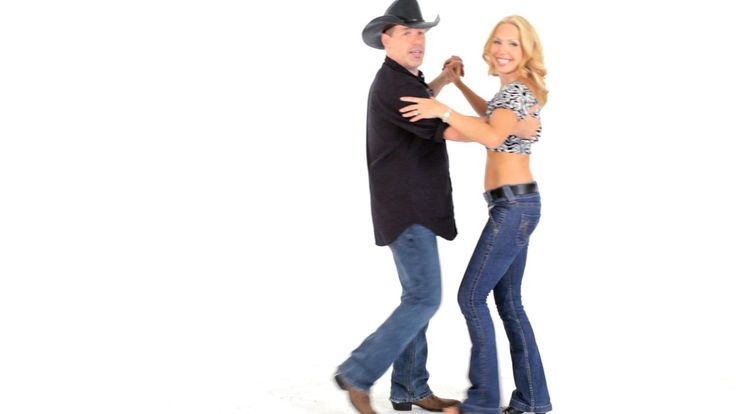 Most of the team.
Most of the team.
Mancini didn't forget about his signature move – Politano and Keane constantly changed places. During the match, I counted seven such inversions. When the Inter striker found himself in the right zone, Keane immediately approached Quagliarella, freeing the corridor for Spinazzola. At the same time, Sensi went down to insure the area - in case Verratti connected. All this was rehearsed in advance, and the level of automatism reached the level of the club. And I do not rule out that the calibration of Keane's place is a throw into the future. After all, this is not Moise's improvisation - such instructions were given to him by Mancini from the edge.
What are the future prospects of the national team?
The central question is what to do with Immobile? Also worrying is the lack of a strong right-back. On the left, Spinazzola should push out the straightforward Biraghi. But on the right there are only Florenzi and Picchini. One is poorly defended, while the other is not so effective in front.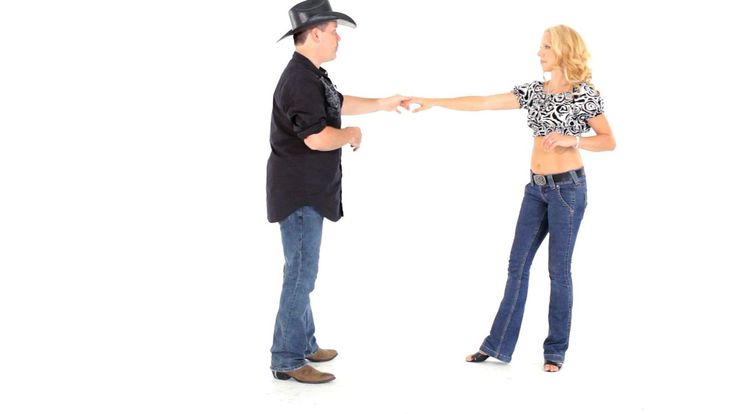 Someone thinks that you can attack with one Spinazzola, and on the opposite flank keep a conditional terzino, like Gianluca Mancini, who will turn into a third central defender. However, opponents will quickly figure it out and find an antidote, so the variability of the attacking esters is needed. I would like to see the revival of Milan full-backs. And, of course, you need to give space to Nicolo Zaniolo - at least in the role of Vice-Barella.
Someone thinks that you can attack with one Spinazzola, and on the opposite flank keep a conditional terzino, like Gianluca Mancini, who will turn into a third central defender. However, opponents will quickly figure it out and find an antidote, so the variability of the attacking esters is needed. I would like to see the revival of Milan full-backs. And, of course, you need to give space to Nicolo Zaniolo - at least in the role of Vice-Barella.
Immobile? The return of Chiesa and Insigne will push ST to move Keane to the center. However, let's not rush. Quagliarella and Bernardeschi may well master the role of the "false nine". Yes, and Balotelli wants to return - Keane's latest achievements have hit his ego.
Separate topic - De Rossi. Last year, Mancini spoke to him on the phone. An agreement was reached: if the Roma captain is needed, he will return to the national team. Daniele is important not only from a tactical point of view. Although who, if not him, can, if necessary, turn into a third central defender with a deadly vertical pass.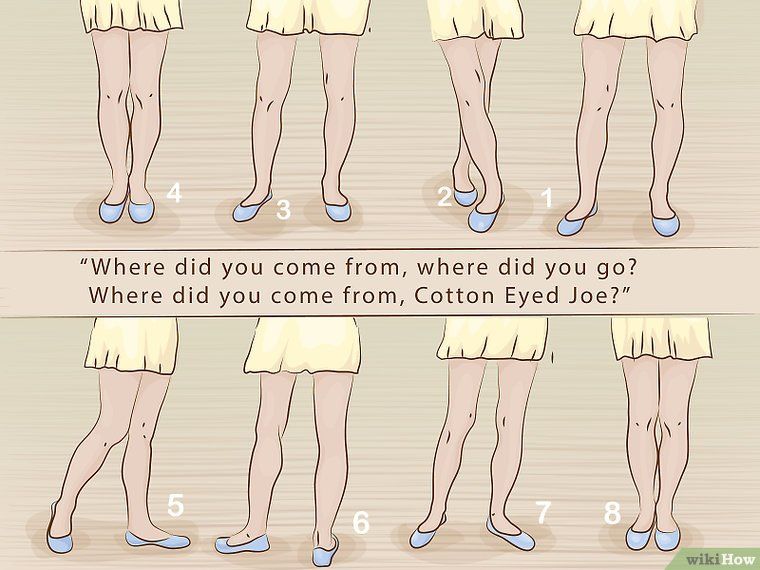 Let's not forget that part of the Euro 2020 matches will be held in Rome. And this is the key point.
Let's not forget that part of the Euro 2020 matches will be held in Rome. And this is the key point.
I recently became interested in the reasons for the failure of the Azzurra Squadra at the 1990 World Cup. I rummaged through all the available interviews of the players of that team and came across an interesting opinion. Several players complained at once that they did not have enough to win ... Bruno Conti. At that time, the Roma legend was 35 years old and had been away from the National for four years. It's a pity! After all, Captain Bergomi only frowned during the entire tournament, while Vialli and Zenga commanded in the locker room. In addition, Luka's game did not go well from the very beginning. There was a great lack of a true Roman who would liberate the guys - smeared someone's boots with toothpaste, scared the partners at night by wrapping himself in toilet paper, and before the decisive penalty shootout he would give the guys a short lecture on tactics. Something like: “Li mortacci tua! Mo fai er cucchiaio! Daje!”
Still, why should Mancini be praised now?
Roberto consistently improves the team. With each collection we move forward. Step by step. And the changes are well thought out. ST not only attracts young people, but also increases the safety margin of the structure.
With each collection we move forward. Step by step. And the changes are well thought out. ST not only attracts young people, but also increases the safety margin of the structure.
Why is this important? Ten years ago, everything collapsed for Roberto Donadoni when Fabio Cannavaro flew out. While we were sorting out who to play in the center of defense, we lost important points, and got the most uncomfortable opponent in the quarterfinals - the Spaniards. Yes, and they would have coped if it were not for the disqualification of Andrea Pirlo. He was replaced by Alberto Aquilani, whose knees were shaking. And three years ago, Antonio Conte lost De Rossi and Thiago Motta and was forced to recreate a midfield almost out of shit and sticks.
A stable system does not depend on individuals. Behind them should be those who are ready to back up, especially in key positions. Therefore, Mancini does not force things. He seems to be waltzing, letting the group get used to the new movements. And he enjoys it. Alessandro Alchato recently said that we now have ST. But we also have it. And he should know it.
And he enjoys it. Alessandro Alchato recently said that we now have ST. But we also have it. And he should know it.
But Mancini was very far from the Azzurra until recently. But something changed him. Maybe the air is Coverciano. There, among the tall bookshelves, among the priceless exhibits, you feel that Calcio originated from here. Football knowledge was born here. A guarantee of this is Beardzot's light-colored jacket, Albertosi's sweater, Brera's typewriter and an azure T-shirt with the number 20 on the back. And also a miraculously preserved pack of cigarettes of one of those who died at 1949 under Superga.
Mancini also received the people of Coverciano. Cleaners, librarians, technicians, museum curators. You can't fool these people. Some have been working there since the time of Artemio Franchi. Yes, and at all events you can see with what respect veterans communicate with ST. I was told in confidence that Gian Piero Ventura felt extremely uncomfortable there, and each time minor incidents happened to him.


